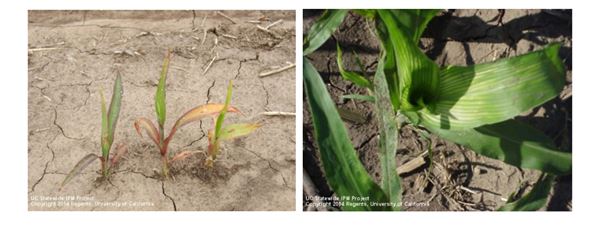USCP Agronomy Check Sorghum And Herbicide Drift
BRENT BEAN
LUBBOCK, TEXAS
A couple of years ago, I was reading an article in a popular grower news magazine where an extension weed scientist (I was once one) was complaining about the number of field complaints he had received about sorghum crops that were suffering from glyphosate drift. His solution was a recommendation that growers quit planting sorghum! Although this would certainly solve the problem, I thought a better solution for sorghum growers may be to put greater effort into getting applicators to control their drift.

Since glyphosate does not volatilize under field conditions, any drift is strictly due to physical drift, which is simply droplets moving with the wind. The good news about physical drift is that it can be controlled. The introduction of new weed control technologies that will allow for the use of 2,4-D and dicamba in soybean- and cotton-tolerant varieties has brought renewed focus on controlling drift. Fortunately, sorghum is tolerant to both 2,4-D and dicamba, so increased use of these products should not be an issue. However, in many cases, these products will be used with glyphosate.
Like most other crops that do not have the glyphosate-tolerant trait, sorghum is susceptible to damage by the herbicide. The crop is most susceptible prior to grain set. The amount of reduction in yield that occurs is determined by numerous factors, especially environmental conditions such as temperature, humidity and the stress the crop is under at the time of the drift event.
When glyphosate drift is suspected, look for a pattern of injury in the field. Injury symptoms are worse closer to the source of the drift and include discoloration in the form of reddening or browning of the tissue or even a bleaching effect. Severely injured sorghum also will be stunted.
Undoubtedly, many of you attended winter meetings that involved discussions about drift control. The primary causes of physical drift are applying herbicide with the wrong nozzles, applying herbicide when it is too windy and not using the correct adjuvants. These factors and others are addressed on the new herbicide labels. I am hopeful that this new focus on drift control will lead to a reduction in complaints about glyphosate and other potentially damaging herbicides in sorghum fields. ∆
BRENT BEAN: USCP Agronomist
